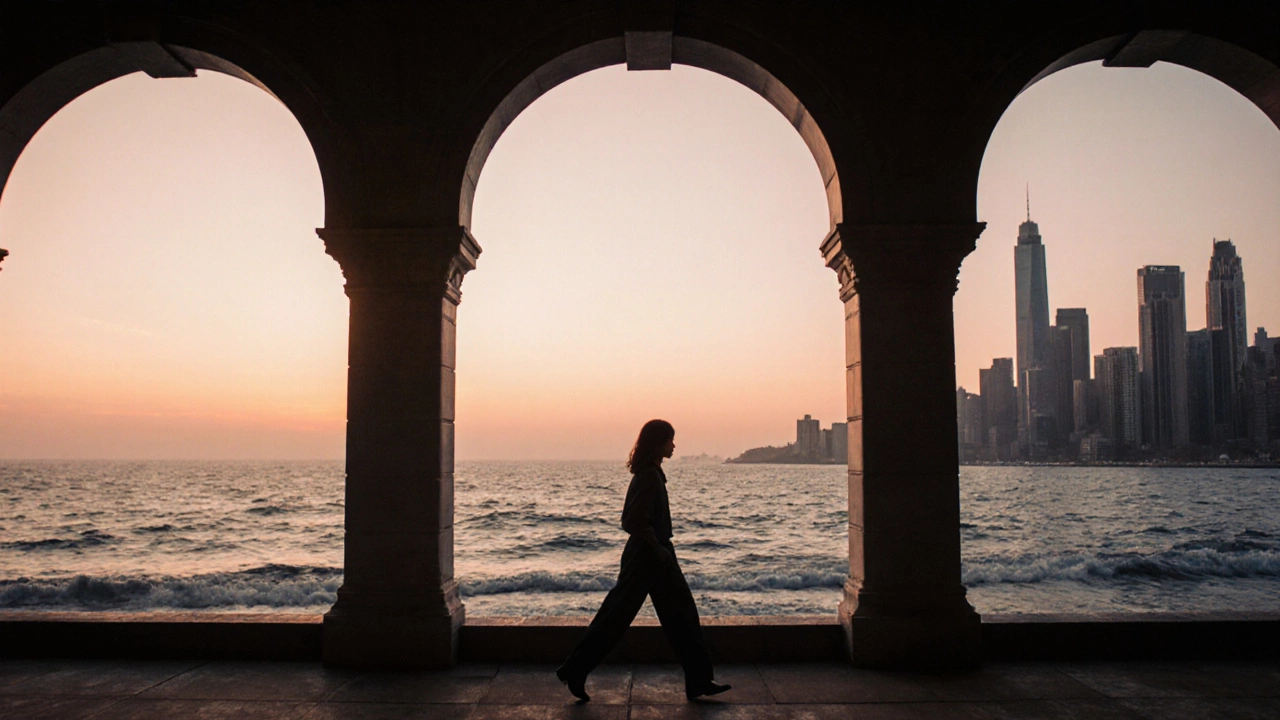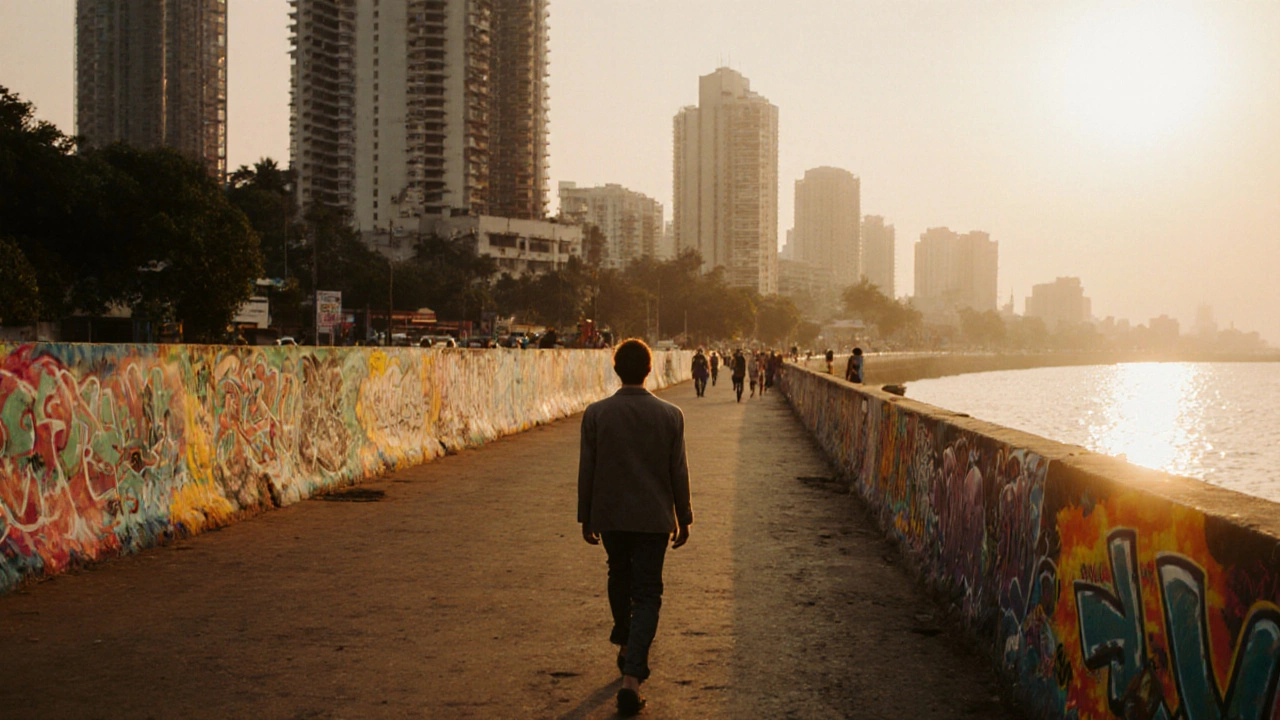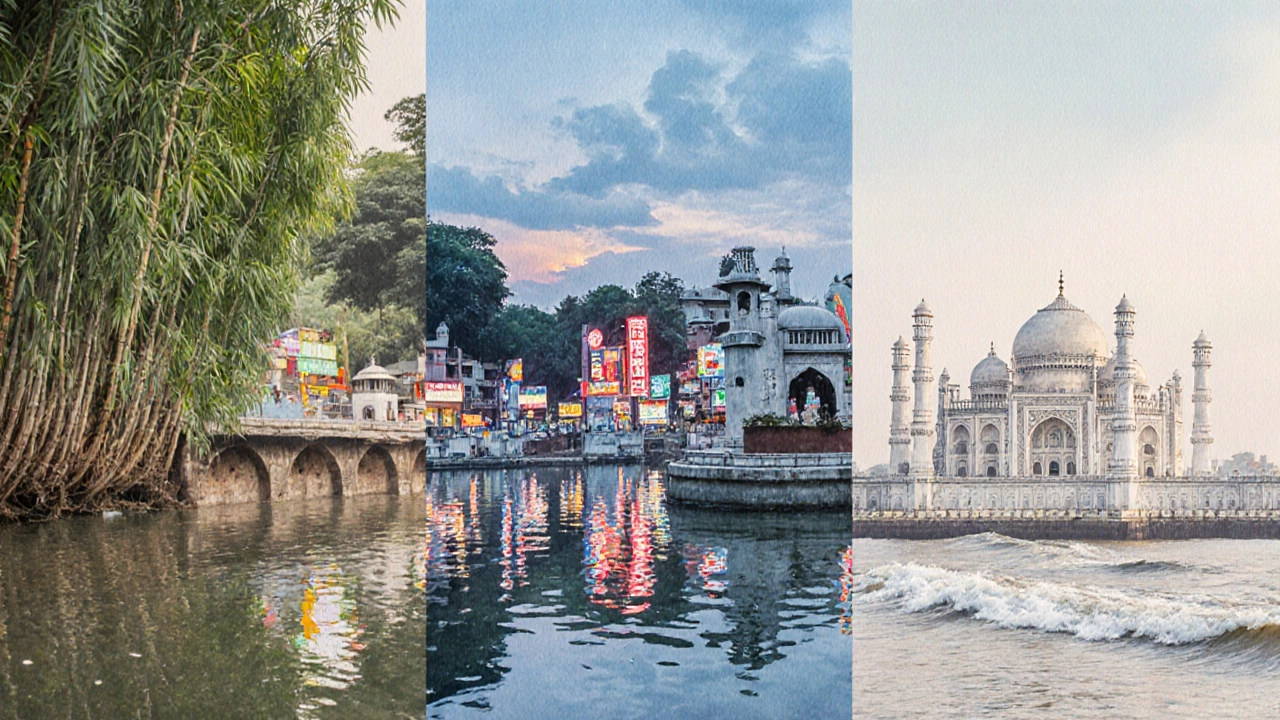Best Photoshoot Locations in Mumbai - Top Spots for Stunning Shots
 Oct, 18 2025
Oct, 18 2025
Mumbai Photoshoot Planner
Find Your Perfect Location
Matching Locations
When scouting Mumbai photoshoot locations is a phrase that evokes sea‑side sunsets, colonial arches, and hidden alleyways buzzing with life. If you’re after the best photoshoot locations in Mumbai, you’ve come to the right place. This guide breaks down the city’s most camera‑friendly spots, tells you when the light is magic, and shares practical tips so your candid shots feel natural and vivid.
Why Mumbai Is a Candid Photographer’s Dream
From bustling markets where colors explode to quiet heritage sites that whisper history, Mumbai offers a spectrum of backdrops. The city’s tropical climate creates strong, diffused light during early mornings and the famed golden hour just before sunset. Plus, the mix of modern skyscrapers and historic architecture lets you switch moods in minutes.
Marine Drive is a long, curved promenade that stretches along the Arabian Sea, offering a sweeping view of the city’s skyline and the sea’s endless horizon.
Ideal for sunrise silhouettes and sunset glows, Marine Drive’s Art Deco arches add a retro vibe. For candid street portraits, head to the nearby Girgaum Chowpatty where locals and tourists mingle. Best time: 5:30 am-7:00 am for sunrise, 6:00 pm-7:30 pm for sunset. Tip: Use a polarizing filter to tame the occasional sea‑glare and bring out the deep blues.
Bandra Bandstand is a seaside promenade in the upscale suburb of Bandra, famous for its street art, sea‑front views, and iconic colonial‑style bungalows.
The graffiti‑laden lanes of Bandra’s streets provide bold, urban textures for candid fashion shoots. Catch the golden hour from the Bandstand’s western end; the light hits the sea wall at a flattering angle. Best time: Late afternoon, around 5:00 pm-6:30 pm. Tip: Shoot on a weekday to avoid the weekend crowds that gather for sunset.
Sanjay Gandhi National Park is a sprawling green oasis on Mumbai’s northern fringe, home to dense forests, ancient caves, and abundant wildlife.
Nature lovers can wander through bamboo groves and capture spontaneous moments with wildlife or locals on treks. The park’s monsoon‑lit trails turn emerald after rain, creating dreamy, soft‑focus backdrops. Best time: Early mornings during the dry season (November-February). Tip: Bring a portable reflector to bounce light onto subjects in shaded forest canopies.
Elephanta Caves is an island heritage site off the coast of Mumbai, featuring rock‑cut Shiva temples and ancient sculptures dating back to the 5th century.
The cavernous interiors provide dramatic chiaroscuro for moody portrait work. The exterior stairways are perfect for candid shots of tourists and locals climbing together. Best time: Mid‑morning (9:30 am-11:30 am) when the sunlight filters through the arches. Tip: Use a fast lens (f/1.8 or wider) to capture the low‑light ambience without a flash.

Banganga Tank is a historic stepwell located in the bustling heart of South Mumbai, surrounded by ancient temples and street vendors.
The reflective water creates a natural mirror for candid street portraits, especially during the early evening when neon signs begin to glow. Best time: Dusk (6:00 pm-7:00 pm) for reflections. Tip: Position your subject near the water’s edge to capture both the historic architecture and the lively market energy.
Haji Ali Dargah is a stunning marble mosque perched on a causeway off the coast, accessible only during low tide.
The white marble glistens under the sun, offering a serene backdrop for portraiture. The surrounding sea provides natural frames for candid silhouettes. Best time: Low tide, early morning (6:30 am-8:00 am). Tip: Wear shoes that can handle the wet sand and carry a backup battery-lighting can be unpredictable under the overcast skies that often accompany low tide.
Kala Ghoda Art Precinct is a cultural hub in South Mumbai, known for its galleries, street murals, and lively cafés.
The eclectic walls and bustling sidewalks provide a colorful canvas for candid lifestyle shoots. Evening street performances add dynamic motion to your frames. Best time: Late afternoon to early evening (4:30 pm-6:30 pm). Tip: Engage with local artists for permission to photograph murals up close; they often love being part of the story.
Quick Comparison of Top Spots
| Location | Vibe | Best Light | Permit Needed? | Access Ease |
|---|---|---|---|---|
| Marine Drive | Coastal, urban | Sunrise & sunset | No (public) | Very easy |
| Bandra Bandstand | Street‑art, trendy | Late afternoon | No | Easy (parking nearby) |
| Sanjay Gandhi National Park | Nature, rustic | Early morning (dry season) | No for public areas | Moderate (bus/train) |
| Elephanta Caves | Historical, dramatic | Mid‑morning | No for exterior, ticket for interior | Boat ride (1‑hour) |
| Banganga Tank | Heritage, market | Dusk | No | Easy (walkable) |
| Haji Ali Dargah | Spiritual, sea‑front | Early morning (low tide) | Yes (restricted during high tide) | Moderate (walk on causeway) |
| Kala Ghoda | Artistic, vibrant | Late afternoon | No | Very easy (central) |

Planning Checklist for a Smooth Shoot
- Scout the location at least two days before the shoot to gauge crowd flow.
- Check weather forecast - Mumbai’s monsoon can surprise you.
- Carry a lightweight reflector and a fast‑prime lens (24mm‑50mm) for low‑light spots.
- Secure any required permits well in advance, especially for heritage sites like Elephanta Caves and Haji Ali Dargah.
- Pack backup batteries, memory cards, and a rain‑cover for your camera.
- Prepare a quick outfit change plan - Mumbai’s humidity can make fabrics stick.
Common Mistakes and How to Avoid Them
- Ignoring the tide schedule. At Haji Ali, the causeway is submerged during high tide, cutting off access.
- Over‑relying on flash. Natural light adds authenticity. Use reflectors instead.
- Choosing peak tourist hours. Early mornings or weekdays give you space to capture candid moments without crowds.
- Skipping local permissions. Some heritage sites require a small fee or a written consent for professional shoots.
Final Thoughts
Mumbai’s diversity means you can tailor each shoot to a story - be it a salty sea‑breeze romance at Marine Drive, a gritty street‑style narrative in Bandra, or a timeless heritage tale at Haji Ali. With the right timing, a few gear tricks, and respect for the locals, you’ll walk away with images that feel both authentic and unforgettable.
Frequently Asked Questions
Do I need a photography permit for public places in Mumbai?
Most open‑air public spots like Marine Drive, Bandra Bandstand, and the Kala Ghoda precinct don’t require a permit for casual or even professional shoots. However, heritage sites such as Elephanta Caves and Haji Ali Dargah often require a fee‑based entry ticket or written permission for commercial use. Always check the local authority’s website before your shoot.
What is the best time of year for outdoor photography in Mumbai?
The window from November to February offers cooler temperatures, clear skies, and lower humidity - perfect for crisp, high‑contrast images. The monsoon (June‑September) brings dramatic clouds but also heavy rain, which can damage gear if you’re not prepared.
Can I use a drone for aerial shots at these locations?
Drone rules in India are strict. You need an Unmanned Aircraft Operator Permit (UAOP) from the DGCA and permission from the local municipal corporation for places like Marine Drive or Haji Ali. Without clearance, flying a drone can lead to hefty fines.
How do I handle crowds during peak tourist hours?
Arrive early, use a wider lens to capture people in the background, and consider shooting from elevated spots (stairs, rooftops) to separate your subject from the crowd. A portable LED panel helps keep the subject lit while the ambient light stays natural.
What gear works best for low‑light interiors like Elephanta Caves?
A fast‑aperture prime (e.g., 24mm f/1.4) paired with a high‑ISO‑capable camera (full‑frame or APS‑C) works well. A sturdy tripod or monopod helps avoid blur, and a handheld LED light can add fill without breaking the cave’s mood.